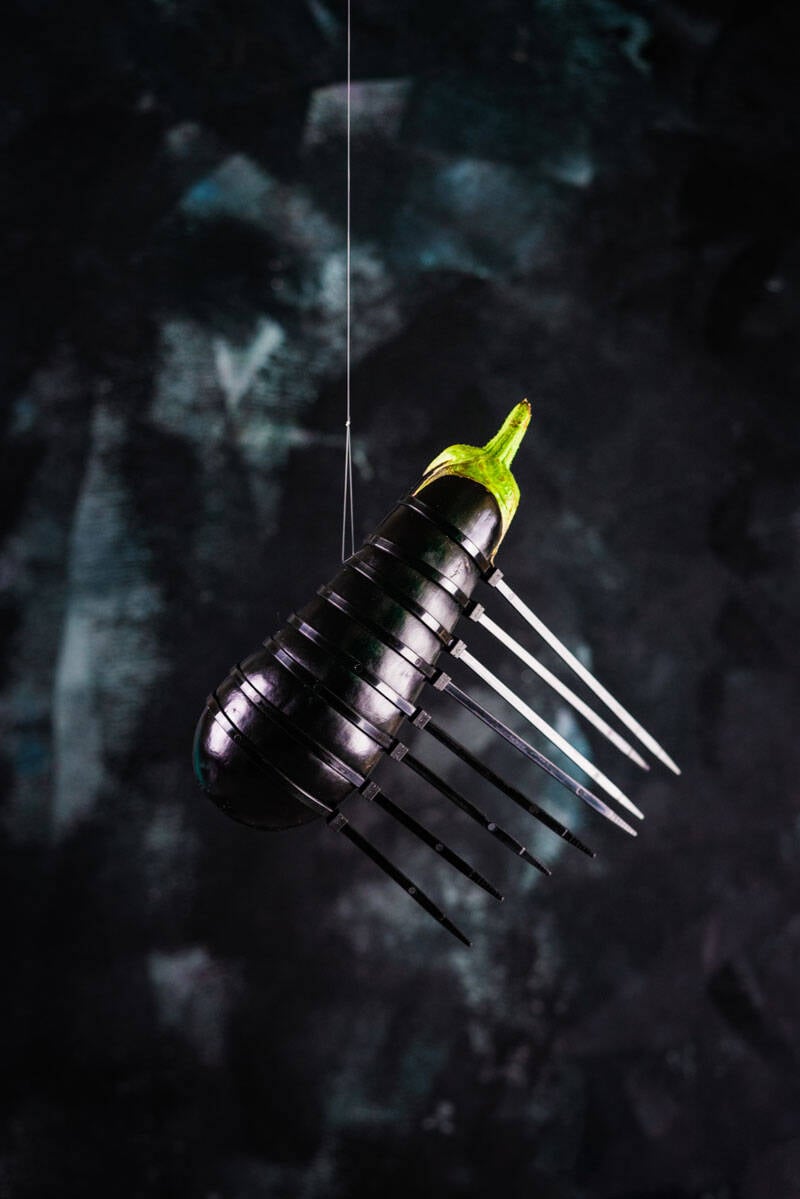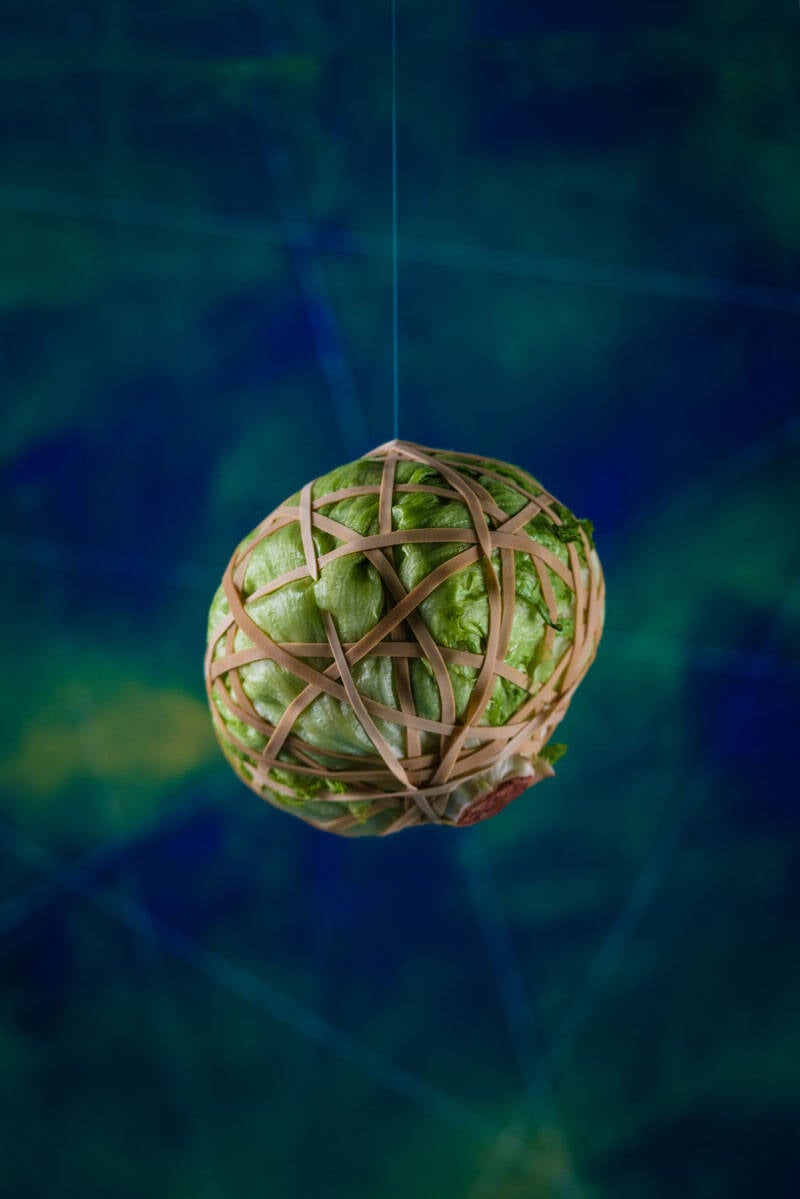
To reduce waste, you also need to change the behavior of teams in the workplace. How do you accomplish that?
Michael: “We do that in many ways, but we always start with the question, ‘what's in it for them?’ We are trying to make it a common conversation topic as well. For instance, at production meetings, we talk about how to effectively set up the line. Everybody from senior management to catering team members need to be having conversations to keep our goal top of mind. We try to emphasize the impact that each person's attitude has towards reaching our goals. And as Kathy has already pointed out, data is important here too. Once individuals realize that they can personally control how much waste is going to get thrown away at the end of the day because of the direct link to how much they put out on a self-service buffet at 1:30 pm, they are more open to change their behavior.”
Kathy: “We are conscious about the message we bring across to motivate our back-of-house operational teams. Of course, the baseline focuses on reducing waste as part of roles and responsibilities, and this is just the way we operate our business. At Google, we serve high quality food, and we ensure that it's safe and fresh and that we minimize waste wherever possible. But to truly motivate, engage and inspire, we need additional messaging. We wondered if our Google Corporate Sustainability goals would resonate with a frontline operation team member. Will they change their behavior simply because Google has made some commitments? Through surveys we found out that many teams care deeply about Google’s Sustainability goals. Some care about it because they worry about climate change. Others care more about not wasting food because they know that people go to bed hungry. We also try to engage Googlers on the topics that they personally care about most.”
“We still have a lot of work to do in moving towards our 2025 goals. But our commitments will not end then and there. Once we reach our goals, we will strive to maintain and accelerate wherever possible within our Google ecosystem, and across the larger Alphabet organization. As we succeed to achieve our goals, we seek to share our insights and findings to enable and empower other companies to do similar things. It doesn't stop with us. We want to maintain and accelerate and then support and encourage others.”
Food waste will never land at zero. How does Google approach the waste that still occurs?
Kathy: “From a downstream waste management perspective, our facilities teams at our Google offices engage with local municipalities. At Google, we are looking to see if we have the right waste management streams across our offices, so that we can properly dispose of any food waste that still occurs. A level of food waste is still going to happen, whether it's trimmings or a little bit of overproduction that can't be avoided or donated. What will help us get to the ‘zero food waste to landfill’ goal is by closing the gap on our composting infrastructure. This requires additional efforts in some areas where there is not yet composting infrastructure in place. Similar to back-of-house operations, composting is another area where it takes all levels of education and engagement. You can work with your facilities team to get the right bins, but you also need your employees and your operations team to actually sort the waste and utilize the proper bins, so that the waste ultimately lands in the right place.”

Repurposing ingredients is key to reducing waste. Can you tell us a bit more about Google’s approach?
Kathy: “This is a really important target area for us. Globally, as we purchase many different products in large volumes, this is a vital lever. We've been purchasing imperfect produce for years now, and have generated significant waste reductions by doing so. Currently, we are running a pilot with Matriark Foods on tomatoes.
Michael: “The focus of the pilot is on all these beautiful tomatoes that are harvested in Virginia, and the 30% don't make it through the selection process. They are being harvested, shipped and processed to the point of selection, but in the end they're either not the right shape, size or color. This equals about 30 million dollars worth of perfectly wholesome fresh food that is getting purged. Matriark is making sauces from these additional tomatoes, and we buy that from them. We're also challenging our vendor teams to take a step back and look at our procurement overall, and what types of products qualify for upcycling and where we might be able to still make some switches.”



How do you inspire your vendor partners to contribute to your mission?
Kathy: “We simply cannot achieve these goals on our own, and need all the support, creativity and innovation from our vendor partners. Our goal of reducing food waste in our kitchens and cafes is in their hands as well; we’ve challenged them to identify initiatives that they can implement, and then encourage them to do so. We categorize these initiatives as our three innovation stage gates, and they include:
Kitchen fundamentals. These are the simple operational practices and procedures that every kitchen should be operating against.
Existing initiatives that are ready to go. Innovations that can be implemented with a low risk and high reward.
New initiatives that need to be tested and piloted. These are projects with a more unpredictable outcome. They may cause disruption, or they may not drive impact at all. This is where we team up together and look at how we can push the envelope a little bit further.”
Michael: “We try to align with the steps our vendor partners are making on their own accord as well. For instance, if one of our vendor partners makes a big statement around waste reduction in Europe, we love to hear that, and will look for ways to align our strategy with their teams, so we create a consistent common language, increase impact, and accelerate change.”
Just in time: scrambling eggs
“At some cafes, team members have built the habit of cooking all the eggs for breakfast in bulk, and then putting them in a warmer, well before breakfast service starts. When eggs are cooked in large volumes, it takes a lot more time (and energy), up to 40 minutes. By cooking smaller batches of eggs, ‘just in time,’ the cooking time is reduced to eight minutes, which makes it a lot less stressful to restock multiple times throughout the hours of service. By batch cooking in this manner, we were able to reduce up to 17% of egg waste between April and August 2022. This is a great example of improving and refreshing kitchen fundamentals.
Shifting to the culinary side of this challenge, Michael, can you provide some examples of the shifts that were made in Google’s kitchens and cafes to reduce waste?
Michael: “Traditionally, culinary teams have always been waste reduction focused, oftentimes because it creates an immediate financial impact on their business. Simply put, waste costs money. But sometimes, waste streams become ‘invisible’ to the people working with them, as they become normalized and turn into blind spots. We help address that by pinpointing back-of-house inefficiencies while streamlining general kitchen processes. It’s what we call ‘improving the kitchen fundamentals.”
“In our battle to reduce food waste, we are reinforcing ‘just in time’ cooking in many of our kitchens and cafes. For our kitchen team members, the thought of 2000 people coming in at 12:05 pm for lunch at five scattered stations can be overwhelming. But they have to look beyond the fear, as this leads to irrational choices. Instead, we encourage a rational approach, where teams are prepared and can be sure that they know exactly what the 15 minute increment throughput is, and how long it takes to cook food or replenish a station. Managers simply have to make sure that all staff needs are met, to enable them to work in the most efficient way."
Improving our kitchens and cafes
‘Google is working to prevent waste from the moment ingredients are received all the way through serving a finished dish’
Examples
Tracking what food is going to waste in the kitchen, utilizing smart tools and then using data to make improvements in how food is prepared, cooked and served in cafes
Encouraging chefs at Google to create innovative dishes that use all parts of the product
Successes
Since starting measuring kitchen food waste in 2014, Google prevented nearly 9.7 million pounds of food from entering landfills
Google operations
Preventing waste before it happens
‘Google strives to minimize food waste in the supply chain by working with suppliers, distributors and vendor partners’
Examples
Sourcing of imperfect produce that would otherwise be tossed
Buying from creative businesses that make food products from upcycled ingredients
Successes
Through the imperfect produce initiative, Google has recovered 462,000 pounds of produce between January 2021 and July 2022
upstream
activities & achievements

When you think about the timeline, how do you make sure you stay on track?
Kathy: “An important piece of the puzzle is that we ensure we are able to measure our progress. What we're really focused on right now is our measurement system, and how to pull relevant data from back-of-house operations . We established KPIs for our vendor partners to measure progress. Metrics are important to help focus on the areas that are lagging behind, and the data demonstrates where we need to activate teams to increase their efforts. At the same time, we can also acknowledge who's doing a great job, and share accolades to continuously recognize our teams. Data helps drive decisions.”
“When the strategy was developed in 2021, the team looked at more than 20 different levers that we could pull to reduce food loss and waste. We evaluated what amount of waste we expected to reduce through those different levers throughout the process. Then we narrowed it down to the 10 items that the team felt had the most potential, and were most impactful to drive reductions in the first year of the project. And from there, we reassess year by year, identifying new target areas for further improvement.”


Cutting food waste in half for every Googler is a lofty goal. Where do you even start?
Kathy: “While we only recently made our commitments public, we have been working on reducing food loss and waste for more than a decade. For example, we already measure our back-of-house operational food waste, and use smart tools like Leanpath. Our teams across the globe have also adopted a growth mindset about the importance of reducing food waste. So, we’ve put a stake in the ground that's even more aggressive and timebound to accelerate our efforts.”
“We publicly announced our food waste goals in March 2022, with a target date to reach them by the end of 2025. We use data from 2019 to measure and report our progress, since this was our last ‘normal’ operating year. Because of the COVID-19 pandemic, the way we work has also changed. As we continue the transition to hybrid work, we’re studying the impact that has on the number of Googlers that are coming in, on their eating habits at work, and on the food and services they require from our cafes. How do we transform our food offering to these new circumstances? This is a key question we are asking ourselves, as we try to understand what hybrid work looks like, now and in the future, and how this will impact our waste streams.”
“Working on a BHAG – big hairy audacious goal – like our food loss and waste reduction targets requires operational alignment, consistent engagement with teams and motivation across all levels. We started by developing a collaborative governance structure. We developed a cross functional working group that included members of our Google Food team and our vendor partners - from global, regional to local teams. We have dedicated team members who work on front-of-house solutions, experts that work on back-of-house processes, plus teams who support employee engagement, marketing and communications, data and reporting, and food recovery infrastructure. We divided the topic of food loss and waste into different areas of responsibility, and have core leaders appointed for all these disciplines. Each of these core leaders are responsible for driving initiatives within their own work streams.”
Food loss and waste goals at Google
In 2021, Google announced a public commitment to achieve net zero emissions across all operations and value chain by 2030. Eliminating food waste is an important component of this goal, as food waste leads to carbon emissions, water loss and wasted resources. To achieve these company-wide carbon and circular economy commitments, Google set two subgoals for food loss and waste for 2025:
Cut food waste in half for each Googler
Send zero food waste to the landfill
Why is Google so focused on this issue, and why should other companies care?
Kathy: “As a company, reducing food waste directly connects to our companywide objectives around accelerating a transition to the circular economy and reducing carbon emissions across our value chain. We are also aligned with the UN Sustainable Development Goals. With so many people going to bed hungry, not only is it the right thing to do, but there is a critical business value to it as well. It makes sense, operationally and economically, to ensure that we're using whatever products we're purchasing to their full extent.”

Michael Kann
Global Culinary Strategy and Development Lead for Food at Google

Kathy Cacciola
Global Sustainability Lead on Google’s Food Team


Moniek de Jongh Oene Sierksma Xiao Er Kong
By 2025, Google aims to cut food waste in half for every employee, while sending zero waste to landfill. To achieve this, teams are working relentlessly to prevent waste during food sourcing and procurement, improve kitchen and cafe processes and procedures, and donating, repurposing or composting excess food. Kathy Cacciola, who leads Global Sustainability for Food at Google, and Michael Kann, the Food team's Global Culinary Strategy and Development Lead, outline their approach to achieving this goal.
Did you know that Google operates one of the world's most ambitious corporate food programs?
Google accelerates the pace for reducing food loss and waste
interview
12 min


To reduce waste, you also need to change the behavior of teams in the workplace. How do you accomplish that?
Michael: “We do that in many ways, but we always start with the question, ‘what's in it for them?’ We are trying to make it a common conversation topic as well. For instance, at production meetings, we talk about how to effectively set up the line. Everybody from senior management to catering team members need to be having conversations to keep our goal top of mind. We try to emphasize the impact that each person's attitude has towards reaching our goals. And as Kathy has already pointed out, data is important here too. Once individuals realize that they can personally control how much waste is going to get thrown away at the end of the day because of the direct link to how much they put out on a self-service buffet at 1:30 pm, they are more open to change their behavior.”
Kathy: “We are conscious about the message we bring across to motivate our back-of-house operational teams. Of course, the baseline focuses on reducing waste as part of roles and responsibilities, and this is just the way we operate our business. At Google, we serve high quality food, and we ensure that it's safe and fresh and that we minimize waste wherever possible. But to truly motivate, engage and inspire, we need additional messaging. We wondered if our Google Corporate Sustainability goals would resonate with a frontline operation team member. Will they change their behavior simply because Google has made some commitments? Through surveys we found out that many teams care deeply about Google’s Sustainability goals. Some care about it because they worry about climate change. Others care more about not wasting food because they know that people go to bed hungry. We also try to engage Googlers on the topics that they personally care about most.”
“We still have a lot of work to do in moving towards our 2025 goals. But our commitments will not end then and there. Once we reach our goals, we will strive to maintain and accelerate wherever possible within our Google ecosystem, and across the larger Alphabet organization. As we succeed to achieve our goals, we seek to share our insights and findings to enable and empower other companies to do similar things. It doesn't stop with us. We want to maintain and accelerate and then support and encourage others.”
Food waste will never land at zero. How does Google approach the waste that still occurs?
Kathy: “From a downstream waste management perspective, our facilities teams at our Google offices engage with local municipalities. At Google, we are looking to see if we have the right waste management streams across our offices, so that we can properly dispose of any food waste that still occurs. A level of food waste is still going to happen, whether it's trimmings or a little bit of overproduction that can't be avoided or donated. What will help us get to the ‘zero food waste to landfill’ goal is by closing the gap on our composting infrastructure. This requires additional efforts in some areas where there is not yet composting infrastructure in place. Similar to back-of-house operations, composting is another area where it takes all levels of education and engagement. You can work with your facilities team to get the right bins, but you also need your employees and your operations team to actually sort the waste and utilize the proper bins, so that the waste ultimately lands in the right place.”



Repurposing ingredients is key to reducing waste. Can you tell us a bit more about Google’s approach?
Kathy: “This is a really important target area for us. Globally, as we purchase many different products in large volumes, this is a vital lever. We've been purchasing imperfect produce for years now, and have generated significant waste reductions by doing so. Currently, we are running a pilot with Matriark Foods on tomatoes.
Michael: “The focus of the pilot is on all these beautiful tomatoes that are harvested in Virginia, and the 30% don't make it through the selection process. They are being harvested, shipped and processed to the point of selection, but in the end they're either not the right shape, size or color. This equals about 30 million dollars worth of perfectly wholesome fresh food that is getting purged. Matriark is making sauces from these additional tomatoes, and we buy that from them. We're also challenging our vendor teams to take a step back and look at our procurement overall, and what types of products qualify for upcycling and where we might be able to still make some switches.”
How do you inspire your vendor partners to contribute to your mission?
Kathy: “We simply cannot achieve these goals on our own, and need all the support, creativity and innovation from our vendor partners. Our goal of reducing food waste in our kitchens and cafes is in their hands as well; we’ve challenged them to identify initiatives that they can implement, and then encourage them to do so. We categorize these initiatives as our three innovation stage gates, and they include:
Kitchen fundamentals. These are the simple operational practices and procedures that every kitchen should be operating against.
Existing initiatives that are ready to go. Innovations that can be implemented with a low risk and high reward.
New initiatives that need to be tested and piloted. These are projects with a more unpredictable outcome. They may cause disruption, or they may not drive impact at all. This is where we team up together and look at how we can push the envelope a little bit further.”
Michael: “We try to align with the steps our vendor partners are making on their own accord as well. For instance, if one of our vendor partners makes a big statement around waste reduction in Europe, we love to hear that, and will look for ways to align our strategy with their teams, so we create a consistent common language, increase impact, and accelerate change.”

Just in time: scrambling eggs
“At some cafes, team members have built the habit of cooking all the eggs for breakfast in bulk, and then putting them in a warmer, well before breakfast service starts. When eggs are cooked in large volumes, it takes a lot more time (and energy), up to 40 minutes. By cooking smaller batches of eggs, ‘just in time,’ the cooking time is reduced to eight minutes, which makes it a lot less stressful to restock multiple times throughout the hours of service. By batch cooking in this manner, we were able to reduce up to 17% of egg waste between April and August 2022. This is a great example of improving and refreshing kitchen fundamentals.
Shifting to the culinary side of this challenge, Michael, can you provide some examples of the shifts that were made in Google’s kitchens and cafes to reduce waste?
Michael: “Traditionally, culinary teams have always been waste reduction focused, oftentimes because it creates an immediate financial impact on their business. Simply put, waste costs money. But sometimes, waste streams become ‘invisible’ to the people working with them, as they become normalized and turn into blind spots. We help address that by pinpointing back-of-house inefficiencies while streamlining general kitchen processes. It’s what we call ‘improving the kitchen fundamentals.”
“In our battle to reduce food waste, we are reinforcing ‘just in time’ cooking in many of our kitchens and cafes. For our kitchen team members, the thought of 2000 people coming in at 12:05 pm for lunch at five scattered stations can be overwhelming. But they have to look beyond the fear, as this leads to irrational choices. Instead, we encourage a rational approach, where teams are prepared and can be sure that they know exactly what the 15 minute increment throughput is, and how long it takes to cook food or replenish a station. Managers simply have to make sure that all staff needs are met, to enable them to work in the most efficient way."
Improving our kitchens and cafes
‘Google is working to prevent waste from the moment ingredients are received all the way through serving a finished dish’
Examples
Tracking what food is going to waste in the kitchen, utilizing smart tools and then using data to make improvements in how food is prepared, cooked and served in cafes
Encouraging chefs at Google to create innovative dishes that use all parts of the product
Successes
Since starting measuring kitchen food waste in 2014, Google prevented nearly 9.7 million pounds of food from entering landfills
Google operations
Preventing waste before it happens
‘Google strives to minimize food waste in the supply chain by working with suppliers, distributors and vendor partners’
Examples
Sourcing of imperfect produce that would otherwise be tossed
Buying from creative businesses that make food products from upcycled ingredients
Successes
Through the imperfect produce initiative, Google has recovered 462,000 pounds of produce between January 2021 and July 2022
upstream
activities & achievements

When you think about the timeline, how do you make sure you stay on track?
Kathy: “An important piece of the puzzle is that we ensure we are able to measure our progress. What we're really focused on right now is our measurement system, and how to pull relevant data from back-of-house operations . We established KPIs for our vendor partners to measure progress. Metrics are important to help focus on the areas that are lagging behind, and the data demonstrates where we need to activate teams to increase their efforts. At the same time, we can also acknowledge who's doing a great job, and share accolades to continuously recognize our teams. Data helps drive decisions.”
“When the strategy was developed in 2021, the team looked at more than 20 different levers that we could pull to reduce food loss and waste. We evaluated what amount of waste we expected to reduce through those different levers throughout the process. Then we narrowed it down to the 10 items that the team felt had the most potential, and were most impactful to drive reductions in the first year of the project. And from there, we reassess year by year, identifying new target areas for further improvement.”



Cutting food waste in half for every Googler is a lofty goal. Where do you even start?
Kathy: “While we only recently made our commitments public, we have been working on reducing food loss and waste for more than a decade. For example, we already measure our back-of-house operational food waste, and use smart tools like Leanpath. Our teams across the globe have also adopted a growth mindset about the importance of reducing food waste. So, we’ve put a stake in the ground that's even more aggressive and timebound to accelerate our efforts.”
“We publicly announced our food waste goals in March 2022, with a target date to reach them by the end of 2025. We use data from 2019 to measure and report our progress, since this was our last ‘normal’ operating year. Because of the COVID-19 pandemic, the way we work has also changed. As we continue the transition to hybrid work, we’re studying the impact that has on the number of Googlers that are coming in, on their eating habits at work, and on the food and services they require from our cafes. How do we transform our food offering to these new circumstances? This is a key question we are asking ourselves, as we try to understand what hybrid work looks like, now and in the future, and how this will impact our waste streams.”
“Working on a BHAG – big hairy audacious goal – like our food loss and waste reduction targets requires operational alignment, consistent engagement with teams and motivation across all levels. We started by developing a collaborative governance structure. We developed a cross functional working group that included members of our Google Food team and our vendor partners - from global, regional to local teams. We have dedicated team members who work on front-of-house solutions, experts that work on back-of-house processes, plus teams who support employee engagement, marketing and communications, data and reporting, and food recovery infrastructure. We divided the topic of food loss and waste into different areas of responsibility, and have core leaders appointed for all these disciplines. Each of these core leaders are responsible for driving initiatives within their own work streams.”
Food loss and waste goals at Google
In 2021, Google announced a public commitment to achieve net zero emissions across all operations and value chain by 2030. Eliminating food waste is an important component of this goal, as food waste leads to carbon emissions, water loss and wasted resources. To achieve these company-wide carbon and circular economy commitments, Google set two subgoals for food loss and waste for 2025:
Cut food waste in half for each Googler
Send zero food waste to the landfill
Why is Google so focused on this issue, and why should other companies care?
Kathy: “As a company, reducing food waste directly connects to our companywide objectives around accelerating a transition to the circular economy and reducing carbon emissions across our value chain. We are also aligned with the UN Sustainable Development Goals. With so many people going to bed hungry, not only is it the right thing to do, but there is a critical business value to it as well. It makes sense, operationally and economically, to ensure that we're using whatever products we're purchasing to their full extent.”

Michael Kann
Global Culinary Strategy and Development Lead for Food at Google

Kathy Cacciola
Global Sustainability Lead on Google’s Food Team


Moniek de Jongh Oene Sierksma Xiao Er Kong
By 2025, Google aims to cut food waste in half for every employee, while sending zero waste to landfill. To achieve this, teams are working relentlessly to prevent waste during food sourcing and procurement, improve kitchen and cafe processes and procedures, and donating, repurposing or composting excess food. Kathy Cacciola, who leads Global Sustainability for Food at Google, and Michael Kann, the Food team's Global Culinary Strategy and Development Lead, outline their approach to achieving this goal.
Did you know that Google operates one of the world's most ambitious corporate food programs?
Google accelerates the pace for reducing food loss and waste
12 min














